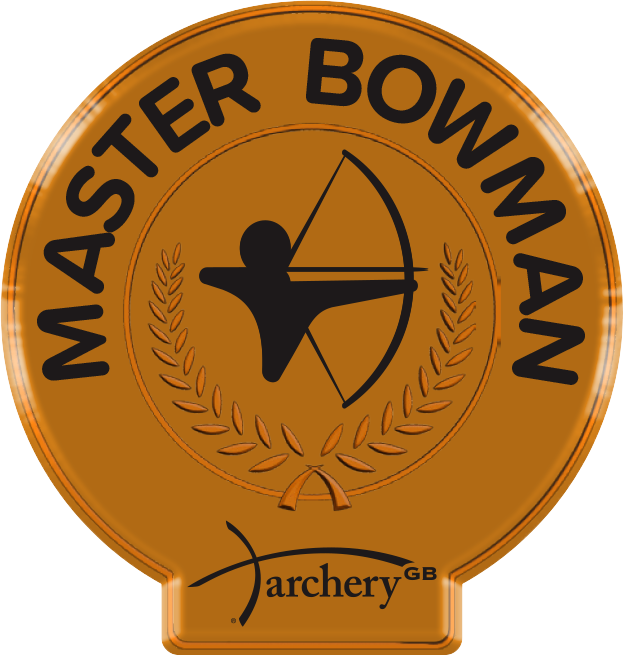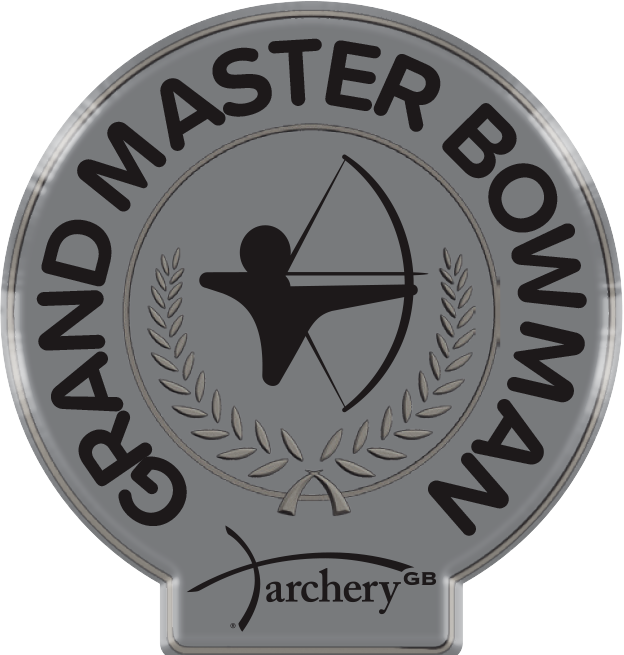Just like the coloured belts in karate, the classification system in UK Archery represents a set of 9 milestones on an archer’s journey for beginner to master. It is the job of the club records officer to track the classification level of each club member. As with all the articles in this series, I would strongly recommend using software to administer this rather complex task, but it’s important to understand how it works under the hood.
There are several things the club records officer needs to know in order to successfully calculate handicaps
- How to use the classification tables
- Eligibility rules
At a high-level, the classification system is quite simple – archers need to shoot a certain number of arrows, above a certain threshold at appropriate qualifying events, in order to reach a classification level. The devil is in the detail though, so let’s look into each of these aspects.
Overview
The classification system has 9 levels, split into three tiers of 3. The three tiers differ only in the eligibility rules attached to them, and different designs and colours of badges.
| Tier | Classification | Abbreviation(s) |
|---|---|---|
| Archer Tier | Archer 3rd Class | A3 |
| Archer 2nd Class | A2 | |
| Archer 1st Class | A1 | |
| Bowman Tier | Bowman 3rd Class | B3 |
| Bowman 2nd Class | B2 | |
| Bowman 1st Class | B1 | |
| Master Bowman Tier | Master Bowman | MB / M3 |
| Grand Master Bowman | GMB / M2 | |
| Elite Master Bowman | EMB / M1 |
In the classification tables, and in this article, the classification names are sometimes abbreviated as shown in the table.
The Classification Tables
The official classification tables show the scores that are required on any given round. There are different tables for each possible category of archer. For example, this is the classification table for Recurve Under 18 Men.

Any of the scores shown in the table are eligible for that category. Some scores are highlighted in bold as being the ones that coaches agree are the appropriate level of challenge for archers of a particular age or ability, but they absolutely can still be used if archers feel comfortable with them.
Not all rounds can be used to achieve all classifications. The rules behind that are not necessary to understand in order to use the tables. If there is a score shown in a particular round for the archer’s category, then it can be used.
Eligibility
Even if there is a score shown in the table, it doesn’t necessarily mean that shooting that score will be eligible for a classification, as the type of event matters. The table below summarises the eligibility requirements of the system.
| Sub-Levels | Award Requirements | ||||
|---|---|---|---|---|---|
| From rounds totalling at least | Rounds | Type of event | Administered by | ||
| Archer Tier | Archer 3rd Class | 12 dozen arrows | All rounds of an appropriate distance | Any event | Clubs |
| Archer 2nd Class | |||||
| Archer 1st Class | |||||
| Bowman Tier | Bowman 3rd Class | 18 dozen arrows | Any competitive event | ||
| Bowman 2nd Class | |||||
| Bowman 1st Class | |||||
| Master Bowman Tier | Master Bowman | 36 dozen arrows | Age-appropriate rounds in the York/Hereford/Bristol, WA1440, and WA720 round families. | Any Record Status Competition | ArcheryGB |
| Grand Master Bowman | |||||
| Elite Master Bowman | |||||
There are two important things to note from this tables
- You need to demonstrate a consistent ability to achieve the necessary scores. This is measured, not in the number of rounds (as they vary massively in how much shooting is required) but in the total number of arrows. For the Archer Tier classifications, you need to shoot rounds totalling at least 12 dozen to achieve the award, 18 dozen for the bowman tier and 36 dozen for the master bowman tier.
- Different types of events are required for each tier. Archer tier scores can be shot anywhere, Bowman tier scores can be shot only at competitive events (more on that below), and Master Bowman tier scores can only be achieved at Record Status events.
What is a Competitive Event?
The requirement for Bowman Tier scores to be shot at competitive events is a recent introduction into the rules, designed to nudge archers towards more formal shooting environments. This does not mean that it has to be a competition, just that it should be more than just a free-form practice session. Any organised club target day (as defined by Rule 313) also meets this criteria. Ultimately, this tier is administered at club level, so it’s up to clubs to find the right balance within the spirit of this requirement.
Records Officer Classification Process
When a club member submits a new score to the records officer, the process would be as follows
- Find the correct classification table for the archer’s category and bowstyle.
- Determine what sort of event it was
- non-competitive – maximum of A1 classification achievable
- competitive – maximum of B1 classification achievable
- record-status – all classifications achievable.
- Look up the score and find the classification associated with it (subject to the maximum classes defined in point 2)
- Record that classification against that score.
- Look at the archer’s previous scores to see if they have achieved more than the required volume of arrows
Worked Example
The easiest was to see this in action is with an example. The picture below shows the fictional season of an archer Men’s U18 Barebow archer. The coloured columns (i) are there to provide a graphical illustration of how the the number of qualifying arrows per classification evolves throughout the season. The bold coloured boxes show the points where the archer achieved the number (or greater) of arrows required at that tier for the next classification. This is just an illustration – in reality you don’t need to calculate all of these numbers, only the ones for the next classifications between their current classification and the highest level they have shot at.
This example shows an archer who became remarkably good through the course of just one season, but it illustrates many aspects of the classification system quite well. For example, some of the scores didn’t qualify due to eligibility criteria and were downgraded. Column (d) indicates what type of event it was, with non-competitive rounds maxing out at Archer 1st Class, non-record status competitive events maxing out at Bowman 1st Class, and record status events letting you go all the way. Each score has it’s own classification, shown in column (f) and the archer’s current rolling classification is shown in column (g).

That table can be viewed in conjunction with this image of the classification table, with each round from column (a) above highlighted on it.

Now multiply it
Archers can hold multiple classifications simultaneously
- For each bowstyle they use.
- For each age-group they are eligible for.
The point about age-groups is often missed. Rule 2b in Shooting Administrative Procedure 9 (SAP9) says
An archer may hold independently assessed classifications in multiple age groups provided they attain the qualifying scores on the relevant rounds for that category.
Until recently, this rule only really affect some of our really good juniors. Some juniors are so good that they compete in higher age groups than their actual age group. Some compete as adults. This is all fine, and they can simultaneously hold classifications in any age group they qualify for. In practice, it’s relatively rare for juniors to seek higher age-group classifications though, but is often seen for U18s who want to gain an adult Master Bowman classification, because that gains them an invite to certain tournaments. Of course, juniors can’t get classifications in younger age groups, only older ones.
Since the introduction of the 50+ age group into UK archery, this can also occur at the other end of the spectrum. Just as a junior can “shoot up” into a older age-group, an adult over 50 can “shoot down” into the normal adult category and simultaneously hold a normal adult classification and a 50+ classification.
For all of these situations, just to state the obvious, if people want to gain classifications in other age groups, they need to use the classification tables for those other age groups.
Because of all of these different ways of considering the same scores, it is important that scores submitted to records officers are extremely clear as to which age groups and bowstyles they relate to. Archers who often straddle multiple groups should have a conversation with their records officers to ensure that everyone is on the same page about how their scores should be treated.
Classification Lifetimes
Classifications last until the end of the next season. An outdoor classification gained in the 2023 will persist until the end of the 2024 outdoor season. If the archer doesn’t reacquire it (or better it) they will lose that one and would be awarded a classification based on solely on the scores from that 2024 season. If they haven’t shot enough to get a new classification, they revert to an “Unclassified” status until they gain a new classification.
So, at the start of each season, the records officer needs to check whether any of their archers’ classifications have expired, and if so calculate what their new classification should be based on the scores they did shoot.
The same procedure applies when a junior moves up an age group – their scores from the previous season are assessed against the new age-group’s classification table to calculate the new classification, or to assign them as Unclassified if sufficient scores weren’t shot.
Claim Procedures & Badges
It is up to the club to decide how to administer classification claims. Where clubs use records management software, it is all automatic – in fact, you’d have to deliberately intervene to stop it happening.
For clubs that are doing this manually, it would be a good idea to pass some of the burden onto archers themselves – making sure that each archer is aware of how the system works so that when they think they have achieved a new classification, they alert the Records Officer to the possibility so that they can validate it. There are many scoring apps that archers use now to track their own scores, handicaps and classifications, and so often the job of the records officer is a mere rubber-stamping exercise.
The three classifications in the Master Bowman tier are administered and awarded by ArcheryGB. The club record officer should still be aware of these though, in order to keep track of the archer’s classification and manage the expiry of those classifications etc., but the formal validation and awarding of them is done by ArcheryGB.
Each classification comes with a badge, and archers love to collect badges. The new 2023 classifications bring with them some new badges which will be hitting the shops soon.
 |
 |
 |
 |
 |
 |
 |
 |
 |
The awarding of badges in the Archer and Bowman tier is done at club level, and different clubs have different approaches.
- Some clubs buy stock of badges and then award them for free when members achieve a new classification (the cost of these is absorbed into membership fees).
- Some clubs buy stock of badges and sell them on to archers when they achieve a new level.
- Some clubs expect archers to just buy their own badges when necessary.
This is entirely up to club to decide. ArcheryGB award MB-tier badges once-only when archers first achieve them.
Next part in the series: Coming soon, Indoor Handicaps and Classifications.
Leave a Reply